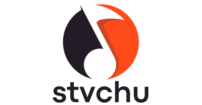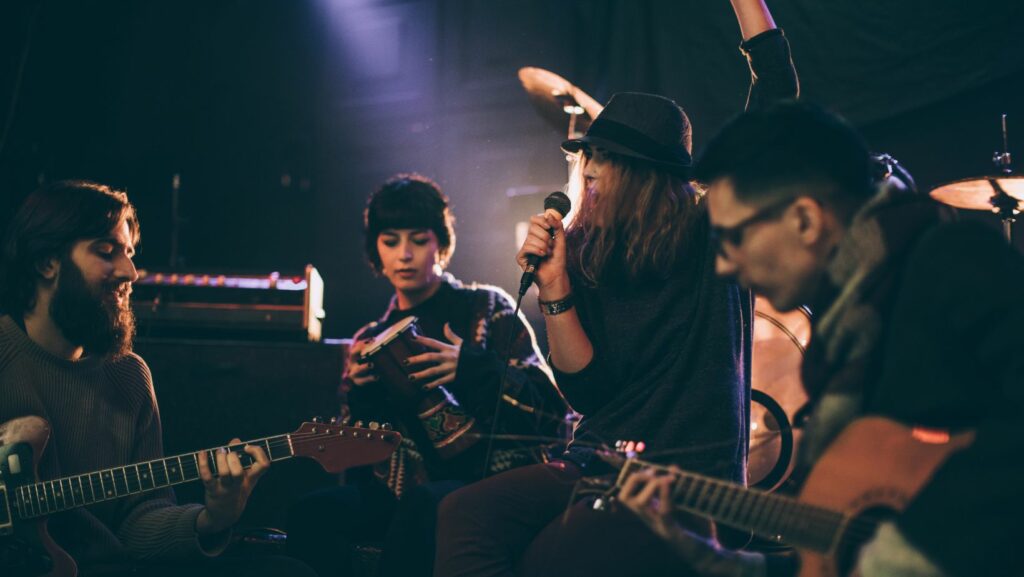If you’re a musician today, you’re not just juggling scales and setlists—you’re also a content creator, marketer, brand builder, and sometimes your own booking agent. While the internet can feel like a noisy stage, the right tools can turn it into your personal spotlight. The best part? You don’t need a record label budget to build a powerful presence. From designing album covers to scheduling your next tour stop, here are the best affordable online tools that help modern musicians save time, sharpen their image, and connect more deeply with fans.
1. Bandzoogle – Build a Website That Sells (Literally)
Your website is still your digital headquarters. Bandzoogle is built specifically for musicians and offers a no-code, drag-and-drop site builder with baked-in tools like mailing lists, EPK templates, merch stores, and fan subscriptions. Unlike generic platforms, it doesn’t take a cut of your sales, which means you keep more from your music and merch. Start with a free trial, and if you like it, plans are a few dollars a month. One lesser-known feature: Bandzoogle auto-generates smart links for your new releases, so you can share one link across social media that fans can use to choose their favorite platform. It’s like Linktree, but smarter—and musician-specific. Don’t underestimate the value of bundling everything in one place.
2. Soundtrap – Cloud-Based Recording with Collaboration Built In
Soundtrap by Spotify is a browser-based digital audio workstation (DAW) that lets you record, edit, and mix from anywhere—with collaborators across the globe. For indie bands or touring musicians, this makes remote songwriting sessions smooth and simple. You can loop in vocalists, producers, or drummers in real time, and each project autosaves in the cloud. It’s especially useful for musicians working in multiple cities or managing multiple versions of a demo. The base plan is free, but even the paid versions are cheaper than most pro DAWs and offer key features like autotune, beats, and sound libraries. Bonus: If you’re already on Spotify, integrating your work for distribution is seamless.
3. Ko-fi – Get Paid Without the Middlemen
Tired of pushing fans to buy merch they don’t really want just to support you? Ko-fi is a no-fee platform where supporters can send small donations—or fund specific projects like a new EP or tour gas money. You can set up memberships, digital downloads, or goal-based tipping (e.g., “Help us fund vinyl pressing!”). It doesn’t take a percentage of donations unless you opt into the Gold plan, and you get paid directly via Stripe or PayPal. Many musicians overlook Ko-fi, but it’s one of the few platforms where you can get support on your terms, without losing authenticity or turning your art into a hard sell.
4. DistroKid – Affordable, Fast Music Distribution
Getting your music on Spotify, Apple Music, Amazon, and TikTok is easier than ever with DistroKid. For a flat annual fee, you can upload unlimited tracks and distribute them everywhere that matters. Many other services charge per single or album, so DistroKid is ideal for prolific artists. It also includes tools for lyric syncing, automatic splits for collaborators, and smart links for pre-saves. Don’t miss their “YouTube Money” tool, which helps you monetize unofficial uploads of your songs. The platform’s backend is simple, fast, and responsive—making it easy to focus on music, not admin work.

5. Printful – Sell Merch Without Inventory
Merch still matters—especially if you want to tour or build a brand beyond your music. But managing stock is a headache. Printful lets you sell shirts, hats, posters, and more on demand. You upload your artwork, and they print and ship directly to your fans when orders come in. There’s no upfront cost or inventory commitment. Printful integrates with platforms like Etsy, Shopify, and Bandzoogle, so you can build a seamless merch experience. Pro tip: Use your album art or lyric quotes to create unique, branded designs fans will actually want to wear.
6. Buffer – Smart Scheduling for Social
You can’t promote your next single or gig if you’re constantly glued to your phone. Buffer is a scheduling tool that lets you plan out your social media posts in advance across platforms like Instagram, Twitter/X, Facebook, and LinkedIn. The free version is robust enough for solo musicians, and its content calendar helps you stay consistent without burning out. Try batching content: write and design a week’s worth of posts in one sitting, schedule them, and focus the rest of the week on your craft. Want to test engagement? Buffer includes post analytics, so you’ll know what fans respond to.
🎵 FAQ: What Musicians Should Know About Photo Editing
Visuals sell the sound—especially in an age of streaming platforms and social-first promotion. Whether it’s your Spotify artist photo, album artwork, or social media teaser, strong imagery builds recognition. But what if you don’t have a photographer or Photoshop? This FAQ section covers common photo editing concerns musicians face—and the tools that make it easier.
Q1: How can I quickly edit promo photos if I don’t have Photoshop?
There are several free or affordable photo editors made for creators on a budget. One great option is Adobe Express tool. You can use it to edit pictures, which works entirely in your browser. It lets you crop, retouch, add text, and even apply filters—perfect for flyers, social banners, or single artwork.
Q2: What’s the best way to create uniform visuals across my online platforms?
Use one consistent preset or template for your edits, and stick to a color scheme that aligns with your musical aesthetic. Tools like Fotor or Pixlr offer template libraries that help ensure your IG, Bandcamp, and Spotify visuals feel cohesive.
Q3: Can I remove cluttered backgrounds from gig photos for better promos?
Yes—many tools now offer AI-powered background removal. Try PhotoRoom or remove.bg, both of which work well for creating polished press images from casual shots. This is especially helpful for solo artists or duos without regular pro shoots.
Q4: How do I prep my headshots for use on streaming services or press kits?
Keep them high-resolution (300dpi), well-lit, and ideally framed vertically. Most press platforms prefer JPEG or PNG formats with a clean background. Make minor retouches to remove blemishes, but don’t over-edit—authenticity matters.
Q5: I only have smartphone shots—how can I make them look pro?
Start by adjusting lighting and contrast using free tools like Snapseed. Then sharpen the image slightly and crop for drama. If you need a color upgrade, look for film-style filters that match your vibe. You don’t need a DSLR to look pro—just an eye and the right tool.
You don’t need a label deal to level up your sound, look, and reach. With the right stack of low-cost tools, you can stay in control of your music, your brand, and your growth. Let the big studios have their gear—today’s smartest musicians are building empires on a browser.



